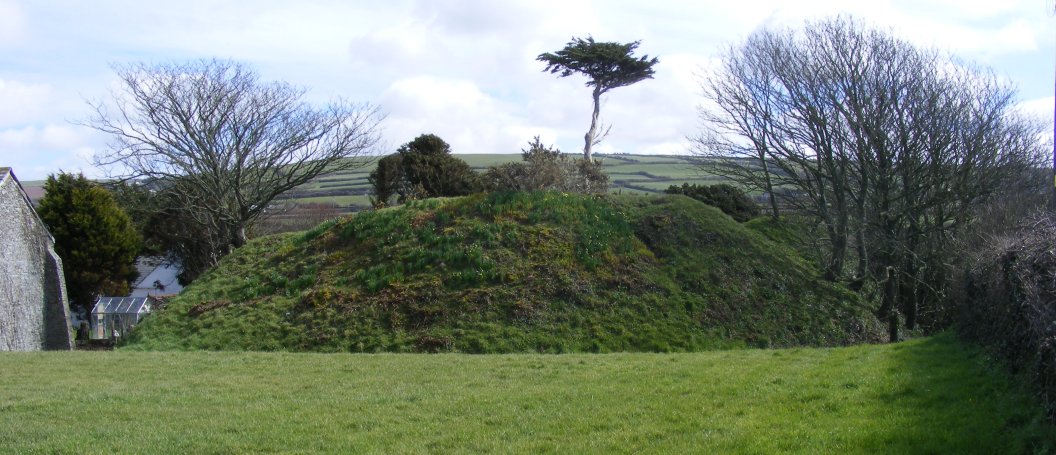Bossiney

The history of Bossiney castle would seem to be tied up with that of Tintagel, less than a mile away to the west - Tintagel standing in the neck of a headland and Bossiney commanding the road to the north well inland. Before 1066 Botcinnii
was held by a Saxon called Alfwy on land that could not be separated
from St Petroc's [in Bodmin] and although there was 1 hide of land
capable of supporting 6 ploughs there was only one there together with
a slave with 3 villagers and 3 borders as well as 30 acres of
pasture. From that date to 1086, when the land was held by St
Michaels [St Michael's Mount], the land
had decreased in value from 20s to 15s. There were also 6 cattle
and 40 sheep there. Holding the vill from Bodmin church was Count
Robert of Mortain, the lord of Berkhamsted and Pevensey castles and perhaps more importantly, Trematon and Launceston
in Cornwall. In 1104 the lands of Robert's son, William, reverted
to the Crown and eventually came to Earl Reginald of Cornwall, an
illegitimate son of King Henry I (1100-35). On Reginald's death
in 1175 Bossiney reverted to the Crown. The design of the castle
suggests that it was built before this time, possibly by the family who
held the vill from the earls of Cornwall. In 1166 this was Roger
Mandeville who held 5 fees from Earl Reginald. Presumably this
earthwork castle had been built by this time.
All of this advances the argument as to who built Bossiney castle
exactly nowhere. Any of the above may or may not have built the
castle, but its design would suggest that it had been built by the mid
twelfth century and was probably abandoned by 1200. Presumably
the castle could have been built as the caput of the Mandevilles and
then passed to their inheritors, the Hornicotes who sold Tintagel
castle, which was in Bossiney manor, to Earl Richard of Cornwall
(d.1272) before 1233. Alternatively it may have been built as a
siege castle against Tintagel during the
Anarchy. All that can be tentatively suggested is that it was not
built by Earl Robert (d.1090) who was generally responsible for much
larger castles, viz Launceston. Another possibility is the fact
that the Hornicotes, who succeeded Roger Mandeville before 1190,
apparently had no other castle, so perhaps they made this their
caput. Again, that implies nothing of its foundation. That
the castle might have been the caput of the barony is suggested by this
being site of the election of MPs for the borough up to 1832.
Description
Whatever Bossiney castle is, it is not a ‘standard' castle
earthwork. It consists of a powerful ringwork some 150' in
diameter with a massive rampart up to 20' high and over 60' wide.
It enclosed a vaguely triangular area between 45' and 50' in diameter
surrounded by a ditch up to 3' deep and an entrance to the east.
The fortress itself is set at the top of a sloping falling to the
south-east. To the north-west is a field that might once have
been a bailey. That this is now surrounded on 3 sides by lower
lying roads may have removed any defences.
Copyright©2022
Paul Martin Remfry

